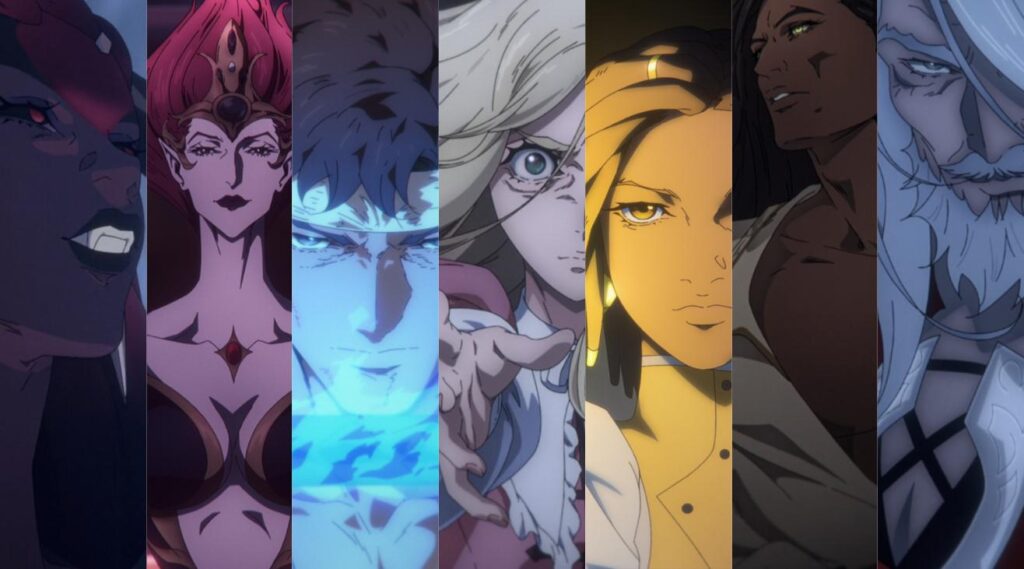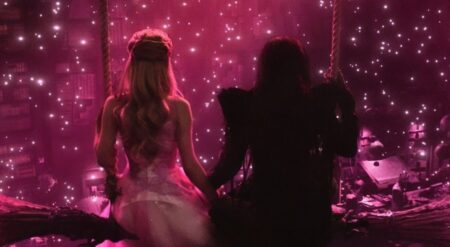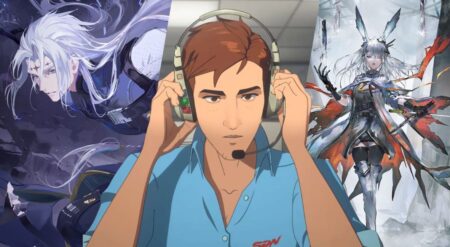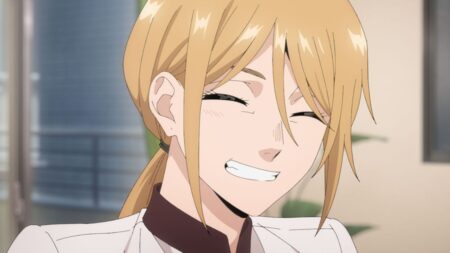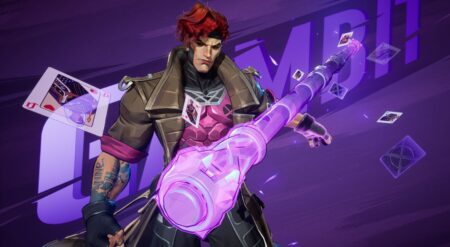Castlevania: Nocturne has a shocking amount of characters for its first season compared to the first seasons of the original Castlevania series. Set during the French Revolution, we follow a young Richter Belmont, Maria, and Annette as this group of young vampire hunters attempts to save the world from the sun-eating Vampire Messiah.
In Season 2, more characters join center stage. Pulled more into focus, Mizrak, Juste Belmont, and more come into the limelight and greatly impact the lore of the series. As the characters get ready for one final battle, each one grows and changes into someone new.
To help you keep them all organized, here is a list of the Castlevania Nocturne characters with large story impact, the roles they play this season, and where they’ve appeared before. Beware, this Castlevania Nocturne characters list contains spoilers for Season 1 and 2 of the Netflix and Powerhouse Animation series. And for a spin-off series, the depth of these characters rival the original.
Richter Belmont
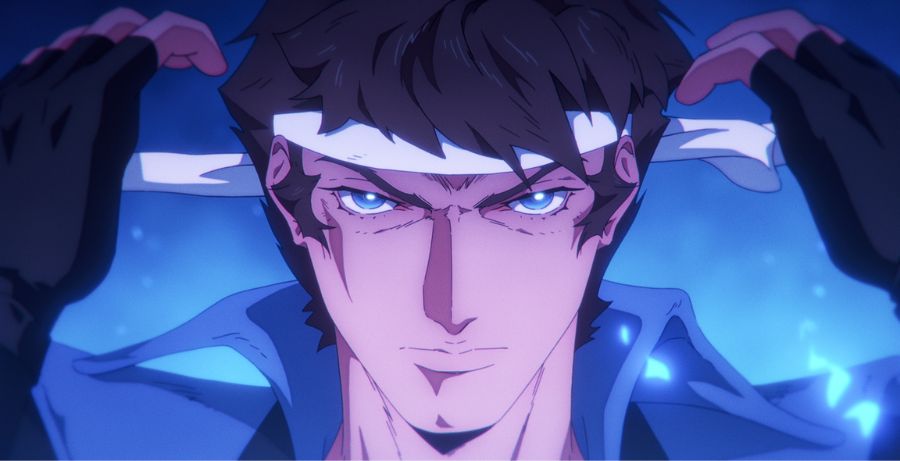
Little boy Belmont, Richter, is one of our two focal points this season. Along with Annette, Richter’s grief and tragedy shape the story and propel him to growth. A descendant of Trevor Belmont and Sypha Belnades, he is the last of the Belmonts (again).
But he’s only left with his familial whip after he lost his magic when Olrox killed his mother in front of him but didn’t think about it given that generations of Belmonts killed with the Vampire Killer whip and knives alone before Sypha Belnades and Trevor Belmont had children. But his magic is a physical manifestation of his inability to process his mother’s death and confront his fear of Olrox.
But when he’s called to fight the Vampire Messiah directly and faces the threat of losing the only remaining family he has, his “aunt” (well, more like a distant relative) Tera and his cousin (but more like his little sister) Maria, he changes. Growing from a child who—as Annette said—hasn’t had to make the tough choices that come with a hard life to a man ready to wear the Belmont crest and fight his demons, Richter isn’t just an interesting character but a strong one.
Strong in his physical power when he unlocks his magic again in a blaze of blue-flamed glory at the tutelage of Juste Belmont (Iain Glen), but even stronger in the way that he confronts his vulnerabilities, Castlevania Nocturne is better with him at the center of it. Complicated and undergoing growth in a way we haven’t seen in Castlevania characters before, only Castlevania Season 2 can complete this compelling arc.
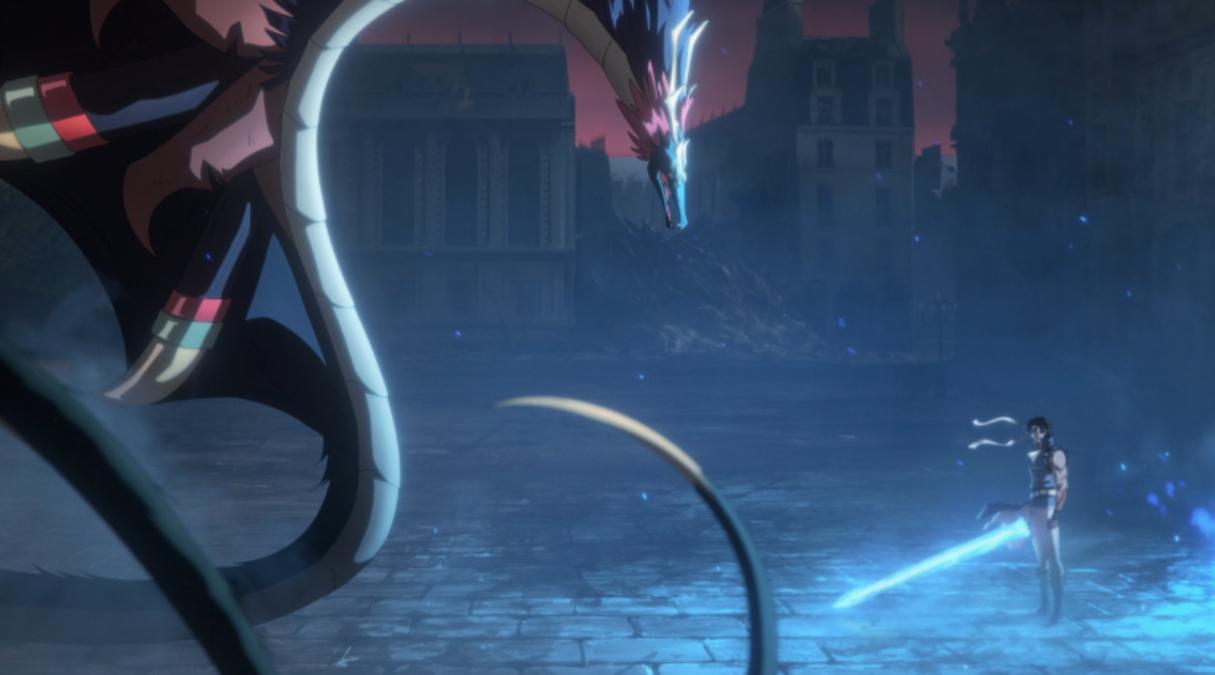
Constantly confronting his own inexperience and trauma, especially when confronted by Olrox, Richter is a stunning example of writing a male character in a multifaceted way that showcases the importance of both strength and recognizing one’s weaknesses, mainly where relationships are concerned, especially with Alucard making his arrival.
In Season 2, Richter gets even more vulnerable. As he helps Alucard locate the last piece needed to stop Erzsebet from ascending to Sekhmet, he faces loss again. A Belmont in name carries a weight for him that no one can really understand. When his mother died, he took it as a sign that he was meant for something great. But as the season delivers loss after loss, he begins to question it.
In the season’s finale, Richter is at his strongest, fighting alongside Alucard and Annette, Juste and Maria; his power finds a synergy that wasn’t possible before. He’s a part of something larger now and doesn’t have to carry the weight of saving the world all on his own.
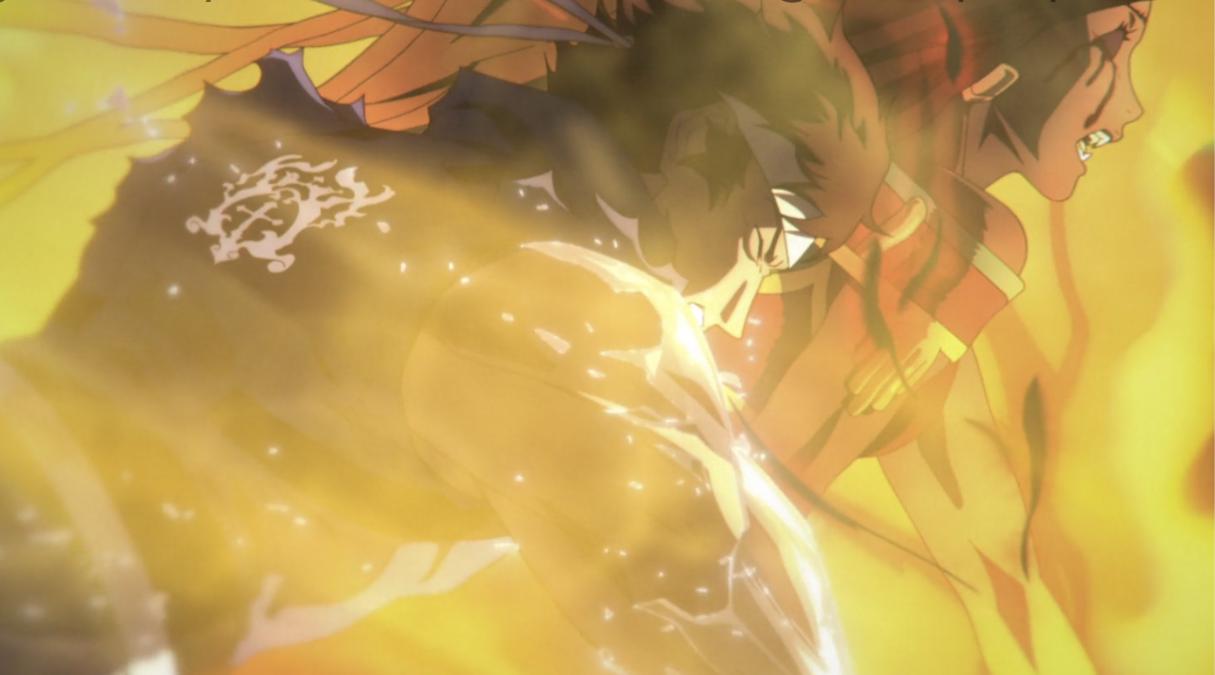
The one thing that Richter can’t abide, however, is Sekhmet using Annette’s body to her content, killing her in the process. While Richter’s Speaker powers this season and last have been used to excellent action effect, as Annette is being consumed by Sekhmet’s fire he uses his ice to try to cool her temperature. He lets he fight, but he holds onto her as long as he can.
It’s in this moment that the romantic tension between the two begins to pay off, primarily because Richter says that he would deal with all of the world’s darkness so long as Annette is by his wife. Powerfully, however, Alucard stops him, pointing out that stopping Sekhmet isn’t what Annette would want. Understanding his place and that love is about selflessness, he lets her go.
Thankfully, Annette survives, and if there is a Castlevania: Nocturne Season 3, their romance in the New World is sure to thrill, having confessed to each other in the last moments of the episode and sharing intimacy as well.
Annette
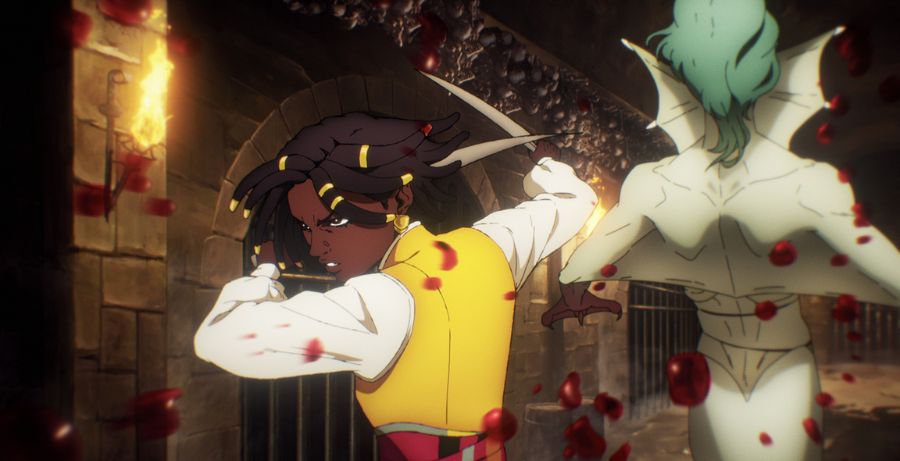
Initially, just Richter’s love interest to be saved in Castlevania: Rondo of Blood, Annette in Castlevania Nocturne is one of the most dynamic characters in the series. A former slave from Haiti, she’s also the embodiment of the orisha Ogun, a god of war and steel. More than a simple magic user, Annette is a force.
A far departure from her damsel in distress trope in the games, the version of Annette in Castlevania Nocturne, the voice actor behind Annette is Thuso Mbedu, who debuted in The Woman King and is a witch from the Caribbean. But she is so much more.
After fighting in the Haitian revolution against the French, Annette came to France with her best friend Edouard (Sydney James Harcourt). She is the living embodiment of Ogun, an ancestry passed down to her through her father. Escaping slavery in Haiti after being saved by Edouard, she fought for freedom in the Haitian Revolution, using her godly powers, eventually winding up in France to take down the vampire aristocracy who once made up the slaveholders on the island.
Annette’s place in Castlevania Nocturne is one of the strongest, rounding out our new trio with Maria Renard (Pixie Davies) and Richter Belmont (Edward Bluemel). In Episode 3 of the series, Annette mobilizes the people of France, delivered against the Abbot (Richard Dormer) who is in a church evoking god while calling on nightcreatures to fight the revolutionaries. It’s an interesting moment that firmly places Catholicism as an ill and an upholder of oppression, a common theme throughout this new series (which isn’t disparate from the representation of religion in the original series).
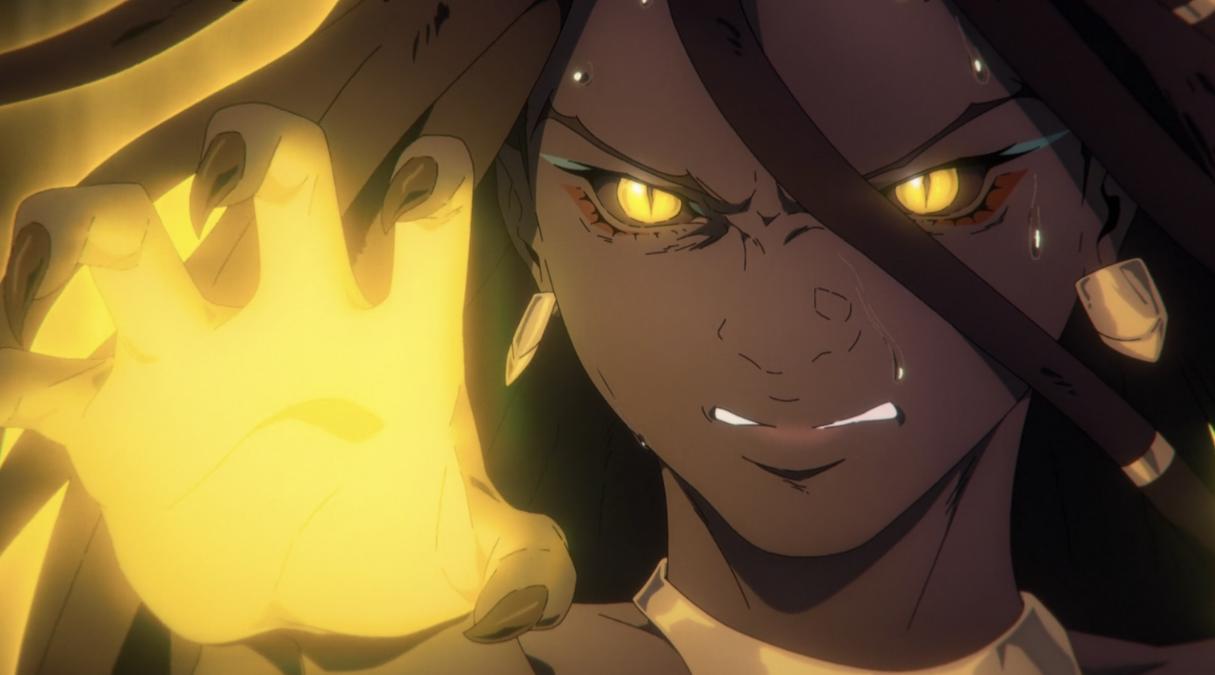
Season 2 of the series dives deeper into the Orishas and Ogun as it becomes even more clear that Annette is chosen to carry out this mission. Alucard also establishes that the magic that Annette has access to is hers and hers alone. Because she was raised in the religion, praying to those gods, she can tap into them. But Richter? No. Annette’s connection to the Spirit World and her ancestors is protected and explored beautifully.
As if this doesn’t already make Annette one of the most powerful Castlevania Nocturne characters, in Season 2, she gains an even larger connection to her ancestors, follows Papa Legba through the gate, and finds Sekhmet on the other side. Allowing Sekhme to inhabit her body, Annette is the only thing evening the playing field for Team Belmont once both Erzsebet and Drolta ascend.
As Sekhmet controls her body on the outside, Annette fights in the spirit world to keep hold of her mind as well. Fighting with a sword and shield, Annette pushes her way through the trials, and even when she seems defeated, she gets back up and keeps fighting. She is the image of resiliency and the perfect partner for Richter.
Alucard
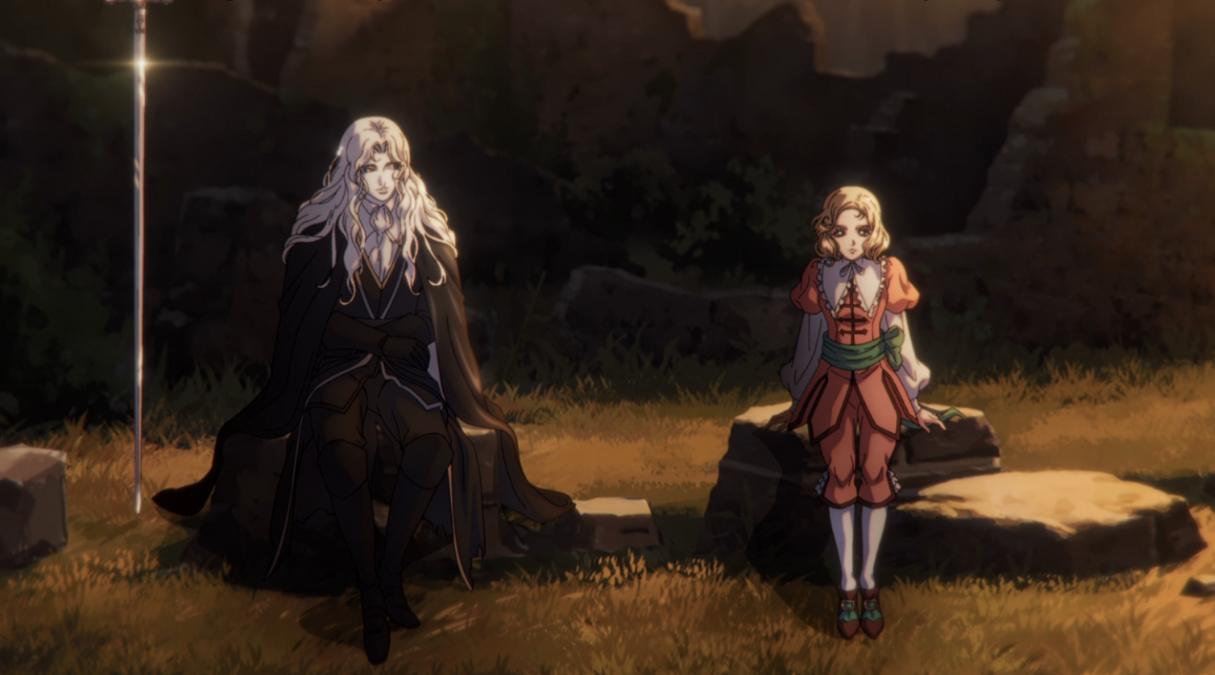
Alucard is a mentor, an uncle, and a family member connected to every Belmont. He is equally annoyed and dedicated to Richter as he was to Trevor. Wiser and less focused on immediate combat than in the original Castlevania series, he wears his age in his actions, his appearance visually softer in aesthetic and kinder in action. His kindness and wisdom don’t do away with any of his snark, but they add a lens through which to view the series.
As Maria contemplates the idea of killing her father in revenge for her mother’s death and transformation, she asks Alucard about his father. You know, the father of all vampires that he managed to kill. She asks if he is evil, and Alucard responds with a simple “Perhaps not.”
It’s a moment that highlights how much Alucard has changed in the hundreds of years since we last saw him. Now, he sees his father through the lens of love and, more specifically, the love he felt for Alucard’s mother. The reason he’s here.
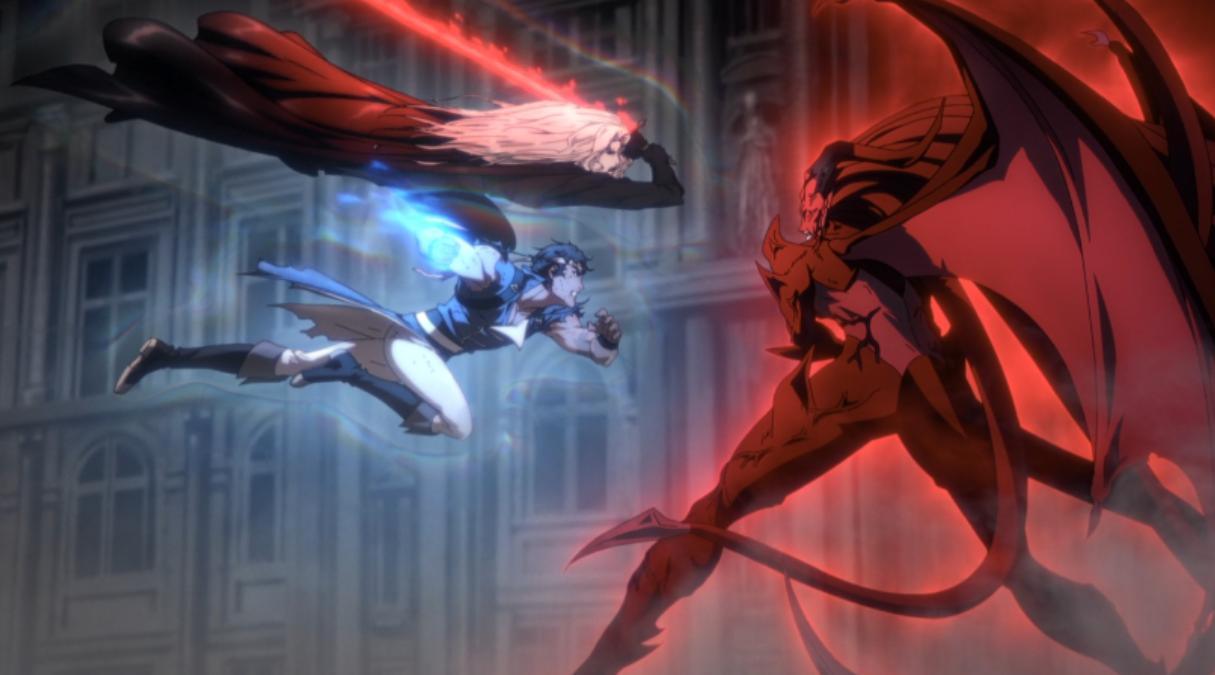
He tells Maria, “Love is a fragile, capricious thing in this cold, fleeting world. But if anything can redeem anyone, then yes. Love.” The tenderness delivered in this line is a perfect balance to the grit and grotesque moments we are about to see in the series’ violence. Even when the dark fantasy series descends into trauma, it doesn’t lose love. Love in all its forms runs like an undercurrent through every decision our characters make, for better and worse.
While we learn how much Alucard has grown in terms of letting go of his hatred of Dracula, we also get breadcrumbs of the hundreds of years since we last saw him. He has traveled the world, gone to Egypt, and more importantly, Japan. He has loved, he has lost, and apparently, Olrox has saved his life once before.
Alucard makes his signature Belmont jokes, but his soft demeanor is that of a paternal figure or mentor. He is there to tell the characters in his stead that they will survive and that they can be something more. He talks to Richter with a kindness that put Annette’s wants and needs first. He guides everyone around him, and it’s beautiful to see.
Olrox
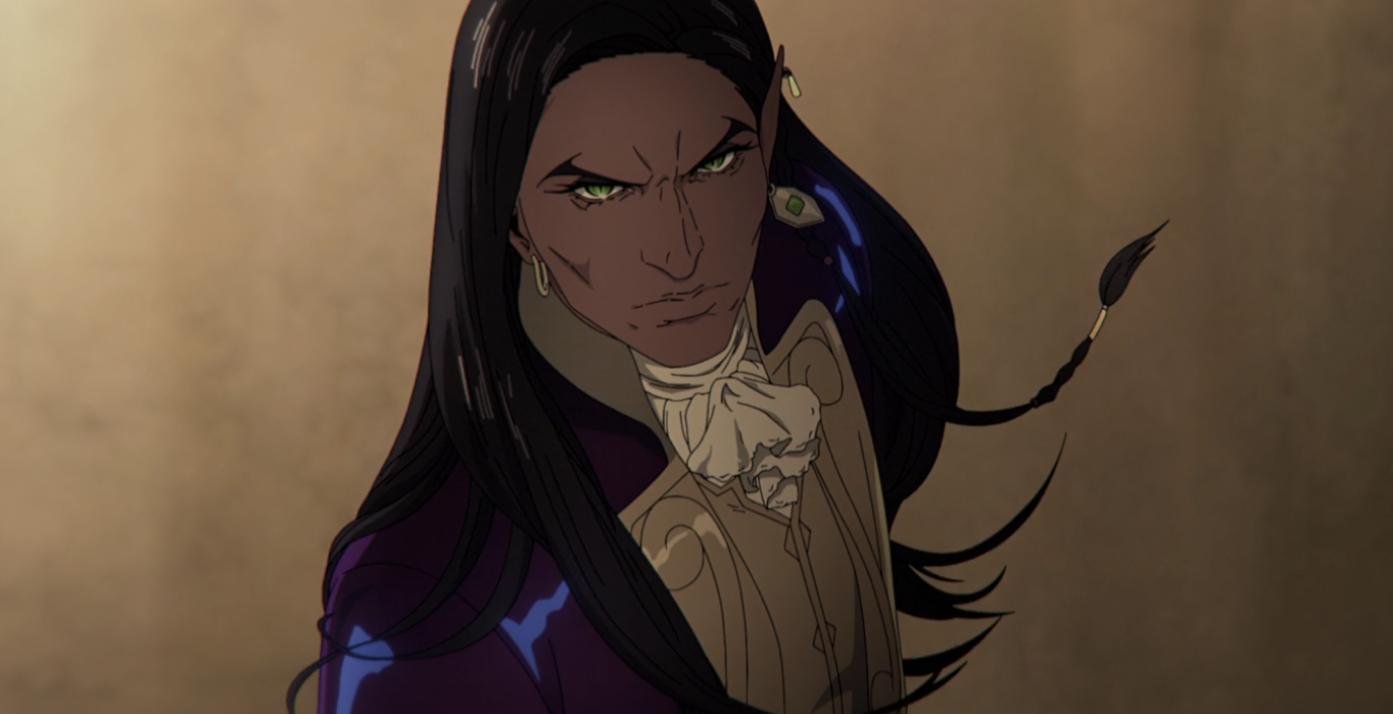
A Boss in Castlevania Symphony of the Night, Olrox has been reimagined. With the same powers on display in the game, the best adaption in his character is that in his reptile form, he becomes the Aztec god Quetzalcoatl, a winged serpent—which keeps in line with the game version but fits his true form to his Aztec identity.
Olrox is the opening villain of Castlevania Nocturne, killing Richter’s mother, Julia Belmont (Sophie Skelton), moments into the start of the series. Played by Zahn McClarnon, who you may know from Reservation Dogs and Marvel’s Echo, Olrox is beautiful but has a level of intimidation that is palpable, crystalized in his final threat to Richter. There is something more sinister in allowing the child of the woman you just killed to live and letting your shadow infect his life from that moment on, a specter of death on the horizon.
Like other villains and antagonists in the original Castlevania series, Olrox is more than meets the murderous green serpent’s eyes. Over the course of the series, audiences get small glimpses into who he is, and the love he had in his life, which, by his account, has only occurred once in his 250 years of being a vampire. With background elements shared in the intimate moments with Mizrak, his lover, this season, the writers have chosen to give Olrox a twinge of vulnerability.
Unlike the other vampires this season, Olrox is a stalwart in his personal ideals and has a long memory of vampire history and oppression that adds a new flair to vampire society that we haven’t seen before. More importantly, we haven’t seen Olrox regret his power or his standing, only the way in which he has seen the world unfold.
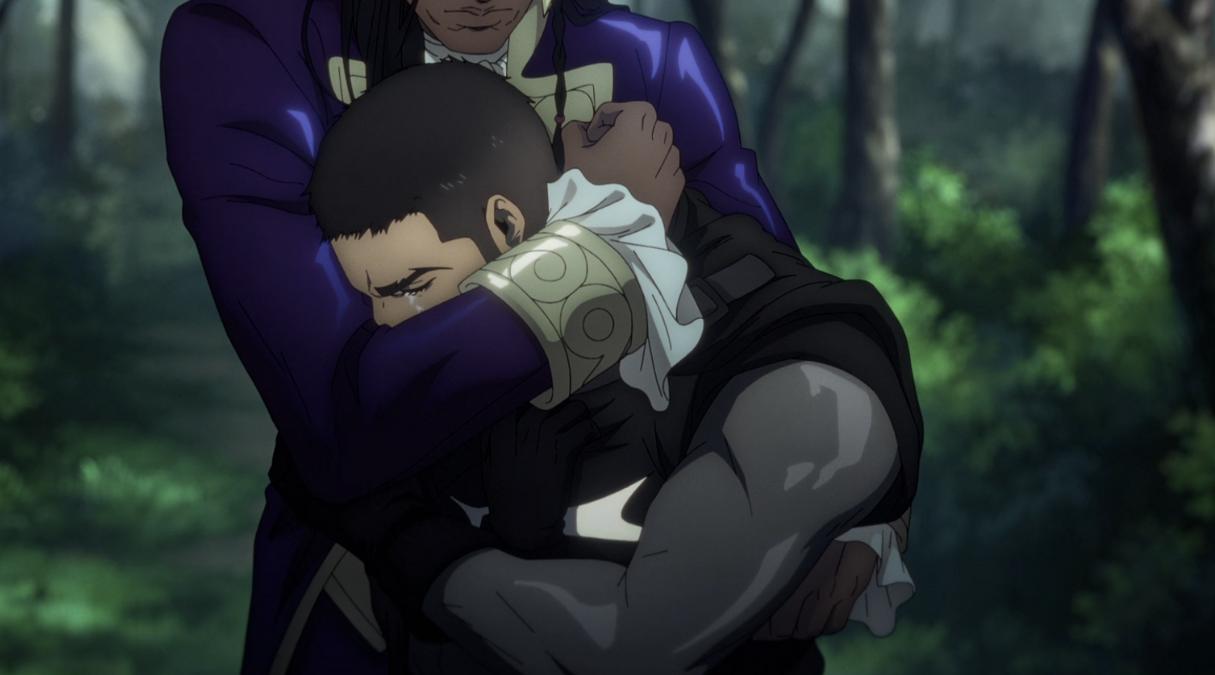
While Season 2 doesn’t give the audience too much more insight into Olrox, it does explore his romance with Mizrak. By seeing how Olrox responds to other people, we get to understand his nature. He loves Mizrak so much so he will disregard his own survival to save him. For Olrox, his deep love for Mizrak and continued devotion is a testament to how he views those close to him. Olrox does not look to sully this good man, only to love him, and challenge him.
Olrox hunted down and killed Richter’s mother because she killed his lover. We can see that forming here when he is willing to fight Old Man Coyote (Mephistopheles by another name) from taking Mizrak when he’s wounded. We can also see what he is willing to do to keep Erzsebeth in his sight.
In Castlevania: Nocturne Season 1, Olrox bowed to Erzsebeth with his eyes held high. A sign of disrespect, he made the active choice to play along but not give her a part himself that survived Spanish colonizers and will not be trampled by others, his pride. However, in Season 2, Olrox allows himself to be branded. Sure, it will fade, given his age and power, but the act makes him a subject, and he accepts it, all for Mizrak.
Olrox is villainous, cold, and Machiavellian, but his past also shapes him. He is who he is because of what he survived, as the rest of his people were murdered or enslaved. Olrox is a mighty deity that his people thought the Spanish God could kill, and with that comes confidence and power. Instead of wielding it for himself, we see him only wielding it to protect the man he loves.
Mizrak
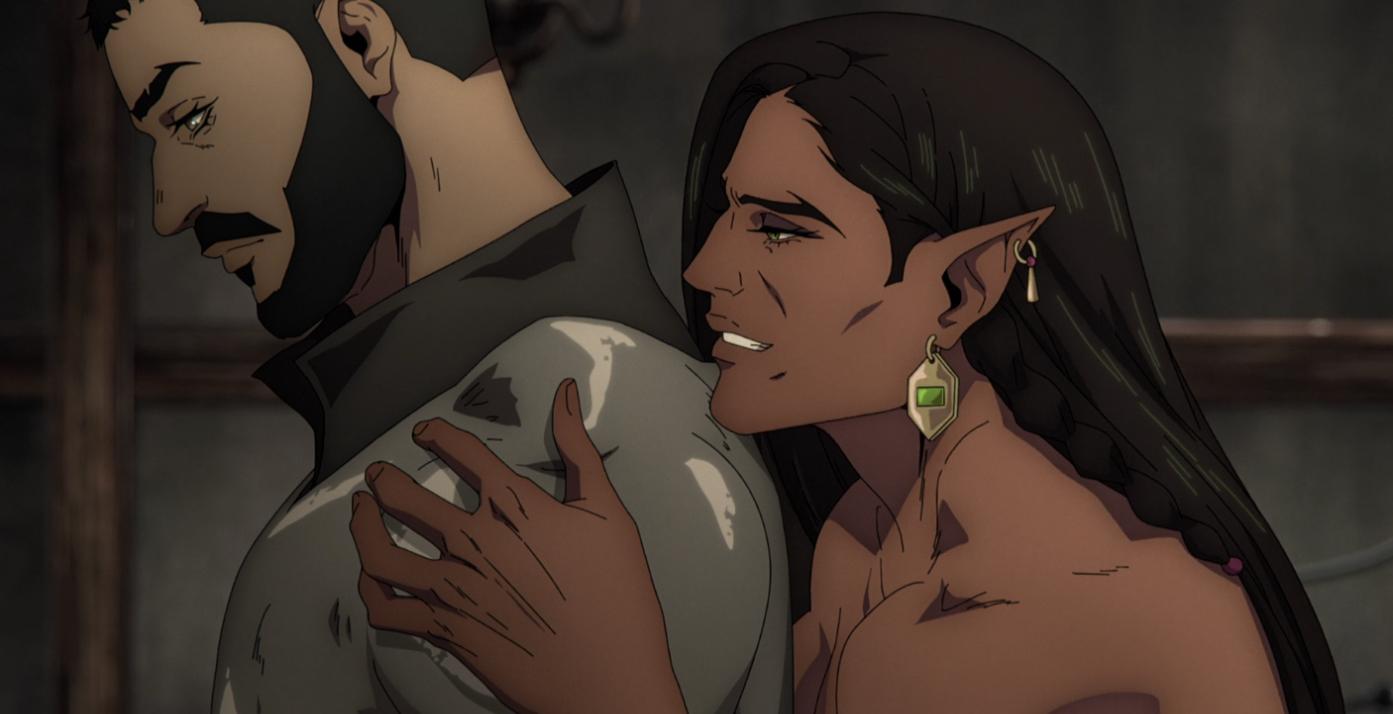
One of the few true humans of the Castlevania Nocturne characters, Mizrak has no special power. A notable good man amongst evil, his belief in God is what led him to fall in line with the Abbot, only to question him when the Forgemaster made his ultimate plan with Erzasebet Bathory known. Mizrak is the first person to help Richter, Annette, and Maria, letting them into the abbey and warning him.
In Season 1, he became Olrox’s lover, returning to his hotel room when asked. Mizrak is also the only way that the audience knows anything about the Aztec vampire. Olrox’s trust in Mizrak is what allows the audience in on his past.
One of the key elements of Mizrak and Olrox’s relationship is about vampirism. When Mizrak was in Olrox’s room and asked him why he killed Julia Belmont, Olrox told him that she had killed his previous lover. However, revenge is not the point of contention; Olrox turning his lover into a vampire against his will is.
Olrox said he loved them and wanted them to stay with him forever, but forever is a long time when you believe vampirism destroys the soul. A Godly man, Mizrak asked if he would do the same to him, to which Olrox stated that he wouldn’t, as he wasn’t in love with Mizrak.
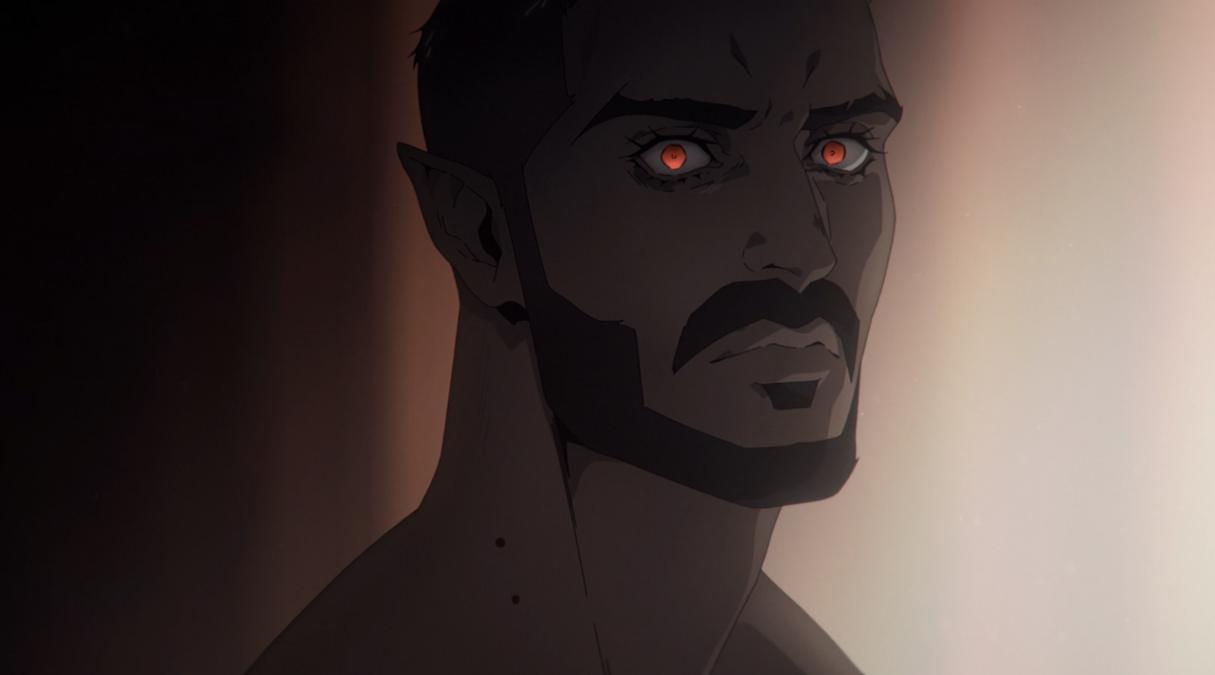
As Season 1 closes, Mizrak helps team Belmont, and Olrox saves him. However, it’s too little too late, and the man of God rebukes Olrox despite it being very clear that love and longing have bound them irreparably. When they meet again in Season 2, Olrox holds Mizrak back from fighting alongside the revolutionaries as Drolta slaughters them. They fight, and Mizrak, despite his deep longing, pushes his lover further away.
In the end, however, Season 2 calls back to the fight that separated them. When Mizrak is mortally wounded fighting alongside the group, Olrox takes him to a room. He’s laid on the bed and then opens his heart to Olrox. He’s terrified of his sins, of the devil, and ultimately of death. As he tells his love that he’s scared, tears stream down his face, and Olrox leans in.
As the scene transitions, it’s clear that Mizrak isn’t human. He’s a vampire. Turned by the man who loves him, despite saying he wouldn’t, it’s an ominous look that he gives his partner. Is this what he wanted? Is it not? Only a season 3 will give us that information. While Mizrak joins Olrox in bed, we don’t know if the aggression is intimate or not.
Edouard

Born a free man in Haiti, Edouard was an opera singer. When Annette ran into his opera house one night, he saved her and showed her the network that he had been working for to protect and rescue escaped slaves. Connecting Annette to her Mamba (mentor) in order to grow her power, Edouard fought alongside Annette in the revolution.
He travels with her to France, leaving behind his boyfriend in Haiti, with the hope of returning. With the ability to read auras and the voice of an angel, his time with Richter, Maria, and Annette in France is cut short when a group of vampires kills him. But his story doesn’t end there. Hamilton’s Syndey James Harcourt voices the opera singer in both spoken and singing parts.
Turned into a nightcreature by the Abbot, Edouard is able to retain his soul and his song. When he saves Annette from other nightcreatures, she tries to make him free by killing him, only to realize that Edouard sees his new life, with little memories of his old one, as one with purpose. He sings to free the souls of the other nightcreatures around him, and his character is one of the largest reasons for survival in the last episodes of the season.
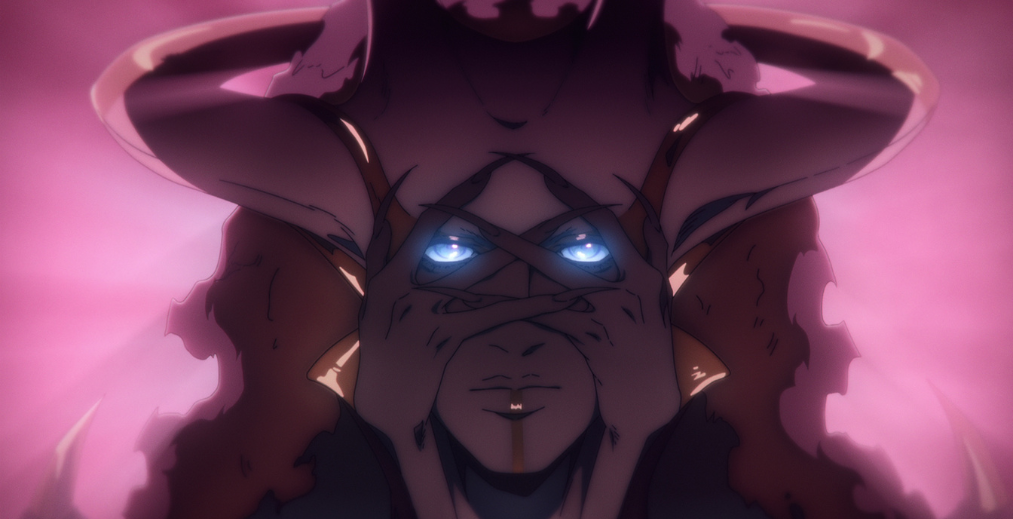
Edouard remains in the background of Castlevania: Nocturne Season 2, but he’s only on the other side now. Turned into a nightcreature in Season 1, he continues to sing. His heart belongs to the opera, and even in death, that remains. However, with his soul and memories intact, the Abbot loses control. Upon Abbot’s death, the nightcreatures are left to Erzsebet. Only now, Edouard chooses to use his voice differently.
With the new round of nightcreautres retaining their identities, Edoaurd begins to talk to them. He sings for them. Ultimately, these former Revolutionary soldiers were called to arms again. This time, against Erzsebet, fighting for France once more.
As the season finishes, he returns to the New World with Annette and Richter. While his appearance is different, his beauty is still there, and his voice is as haunting as ever. He closes out the season with a song, bringing solace and sadness simultaneously.
Maria Renard
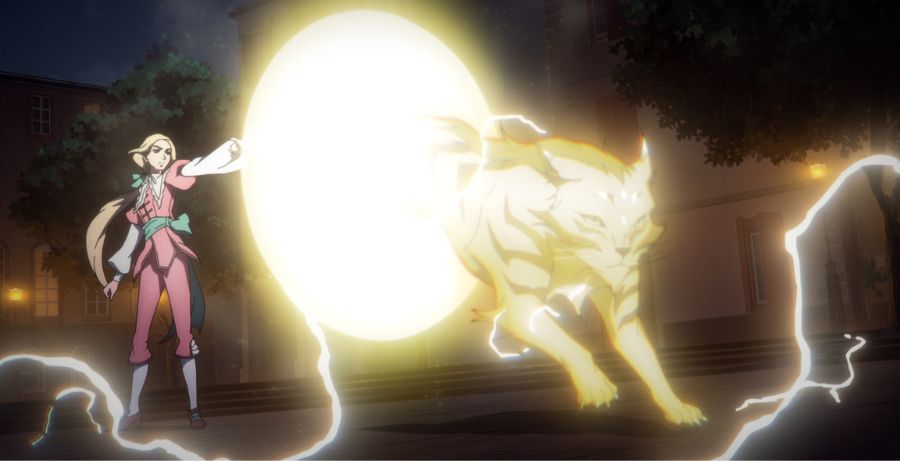
Featured in Castlevania: Rondo of Blood & The Dracula X Chronicles, Symphony of the Night, and Nocturne of Recollection, Maria Renard’s design is the most faithful to the way she’s presented in the games, primarily in her appearance in the Dracula X Chronicles.
A Speaker like her mother, she is Richter Belmont’s cousin and has the power to use magic like we’ve seen in the past, as well as summon animals from portals she creates, commanding them to fight for her, scout for her, and assist in moving through the world. Extensions of her being, she feels deeply when they’re killed and does her best to heal and protect them.
The youngest of the new trio with Richter and Annette, Maria is also the most idealistic, giving inspirational monologues to revolutionaries. Stronger even than what we see in the games at this age, she is a vampire huntress who is pulled into the events of Castlevania Nocturne because of her relationships with the other characters.
In the last couple of episodes, her importance grows when her lineage is revealed to her, and she directly confronts the Abbot in an attempt to stop him from creating nightcreatures and to turn away from the vampires. With three games of power and character development, I can’t wait to see how she develops in the series, especially now that she’s lost her mother.
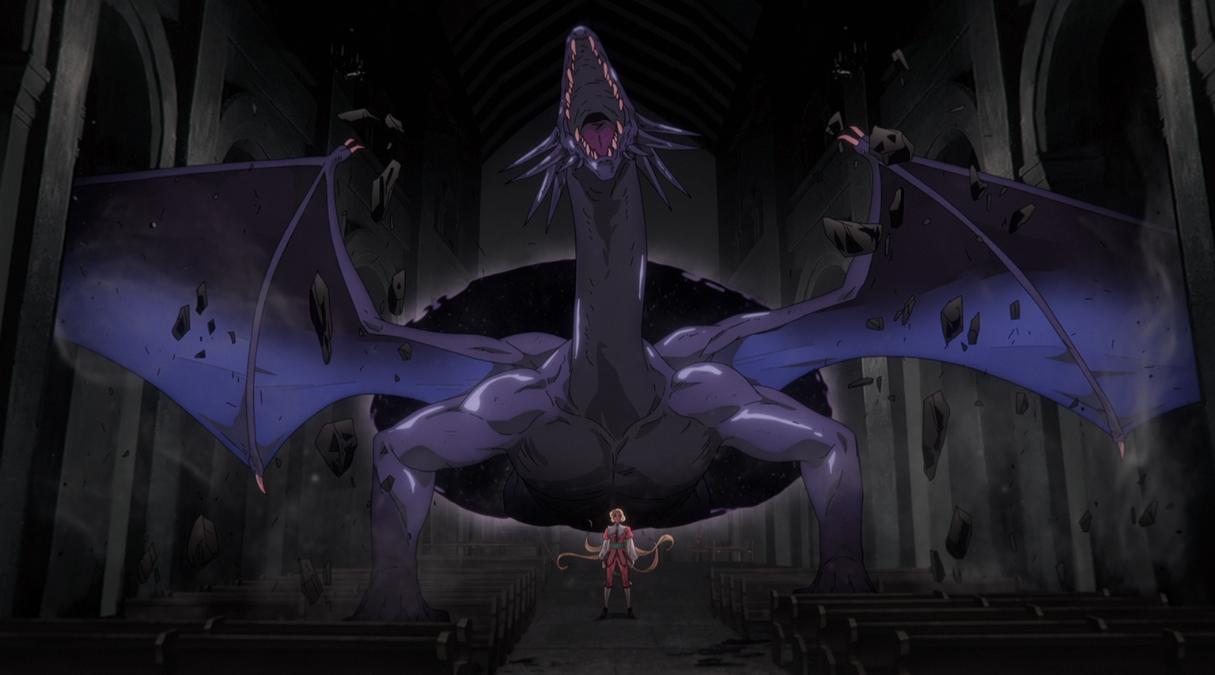
In Season 2, Maria’s journey is dedicated to staring into the abyss, having it look back, and ultimately choosing to embrace the monster within it, maintain a sense of self that values life, or succumb to death. Tera may be a vampire now, but she is still around and incapable of removing herself from her daughter’s life.
Seeing her mother as someone different, someone angry and resentful changes Maria. Her despair morphs her powers from rings of light summoning animals familiar to this world to rings of spiraling darkness pulling monsters from another realm entirely. Beasts, dragons, and their terrifying ilk are in Maria’s hands, and all Juste can tell her is to stop.
When Juste reaches out to Maria, he says that her despair will rot her from the inside out if she allows it to drive her actions and magic. Her darkness is all-consuming, and Tera is fanning the flames of revenge. Maria is at odds with herself this season, and instead of making it an easy road, it’s winding and unsettling.
Maria kills her father, loses her mother, opens up a portal to hell knows where and pushes back against every man in her life that comes in attempting to take care of her. Maria is the youngest of the series, but her strength isn’t in conjuring dragons from the abyss; it’s her resiliency and focused approach to survival and walking her own path that makes her become a character that excels far beyond what I thought she could be in the first season.
Tera Renard
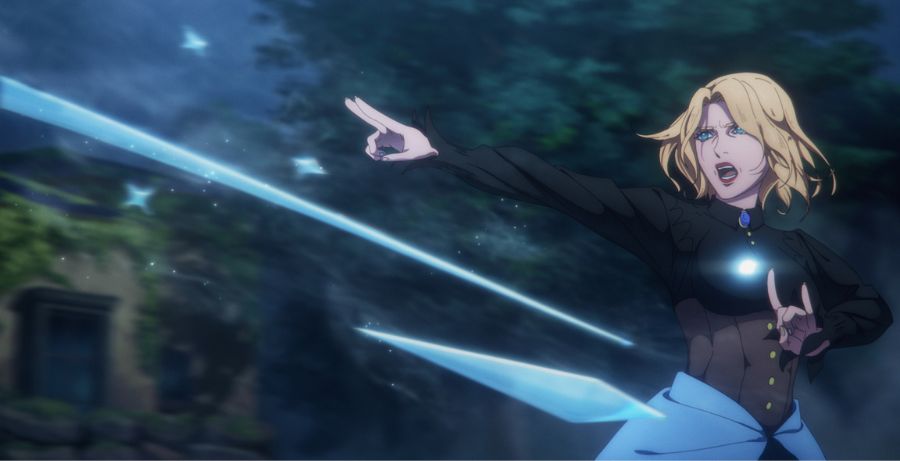
Based on the character of the same name in Castlevania: Rondo of Blood, Tera Renard (Nastassja Kinski) is Richter Belmont’s aunt and is a Russian Speaker who escaped her homeland with the evil of Erzsebet Báthory at her back.
When she lost her sister to Bathory’s brutality, she was forced to put her out of her misery once she turned into a vampire. A powerful Speaker, Tera’s spells come in handy consistently as she adds valuable support to the core trio we have this season, which includes her equally as magically talented daughter Maria.
Still in love with the church Abbot, who is tasked with making nightcreatures for the Vampire Messiah, she is forced to confront her past and protect her future when she sacrifices herself for her daughter on Bathory’s altar. Turned into a vampire by Seaosn’s end, it’s clear that this isn’t the last we’ve seen of Tera, and given her strength in life, seeing the strength she wields as a vampire is to be expected.
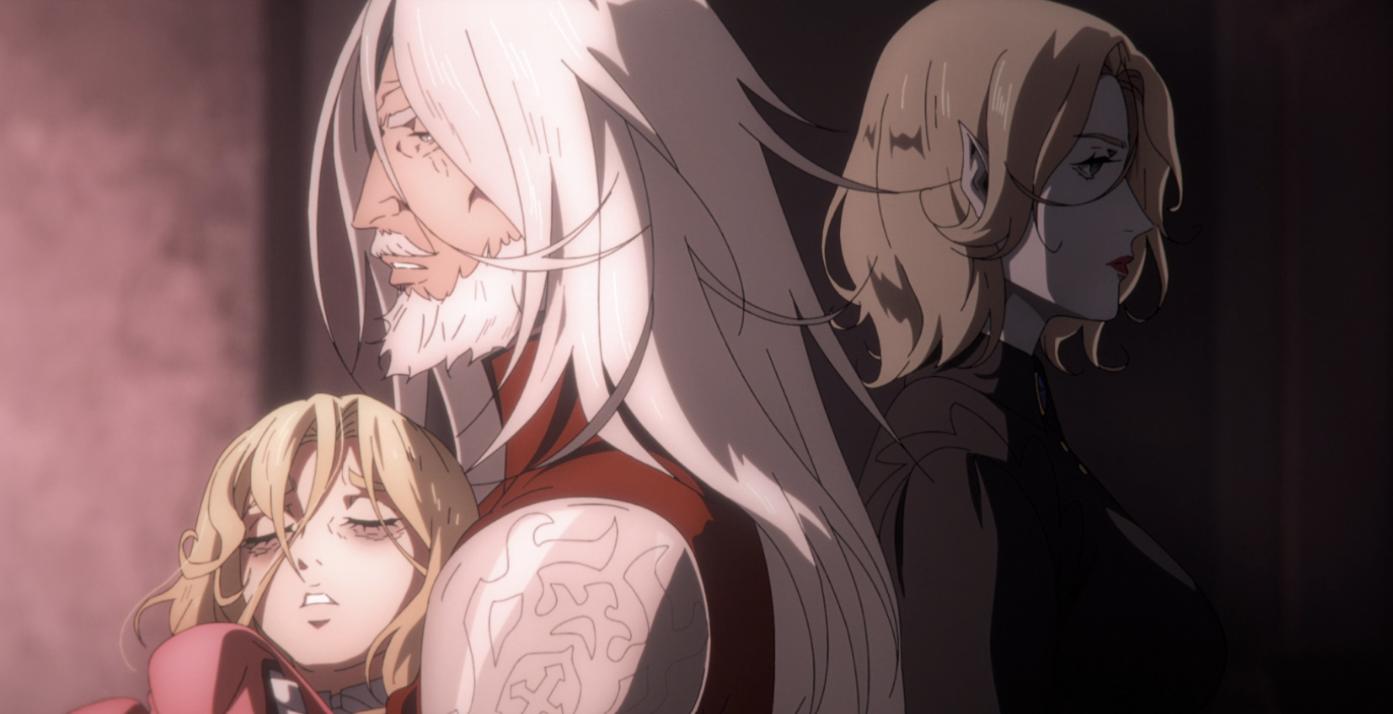
As a vampire, Tera hates herself. She’s what she has spent her life killing, and the only thing that she hates more than herself is the Abbot. The man she used to love, her anger over the ease with which she was going to kill their daughter, is unmatched. That hatred burns into a rage that drives her to be a part of Maria’s life, even when she knows she shouldn’t be involved in it anymore.
Tera fans the flames of Maria’s hatred. Having left Erzsebet’s side, she attempts to reclaim the life she thought would end, but she only brings more despair .The pain illustrated on Tera’s face is harrowing, matching her daughter’s only with more moving under the surface.
We don’t get to explore much more of Tera’s pain outside of how she impacts Maria, but what we see is enough. She pushes her daughter into the abyss and then realizes how much she has failed. The soul that’s left inside of her stops her daughter, and finally understands that she doesn’t belong in that world anymore.
As Season 2 ends, we see her watching a crowd in France, cutting between Alucard, Juste, and Maria on one side and Tera on the other. With a grimace on her face, Tera has Mephistopheles over her shoulder. The devilish shadow in the series stands above, a smile growing.
Juste Belmont
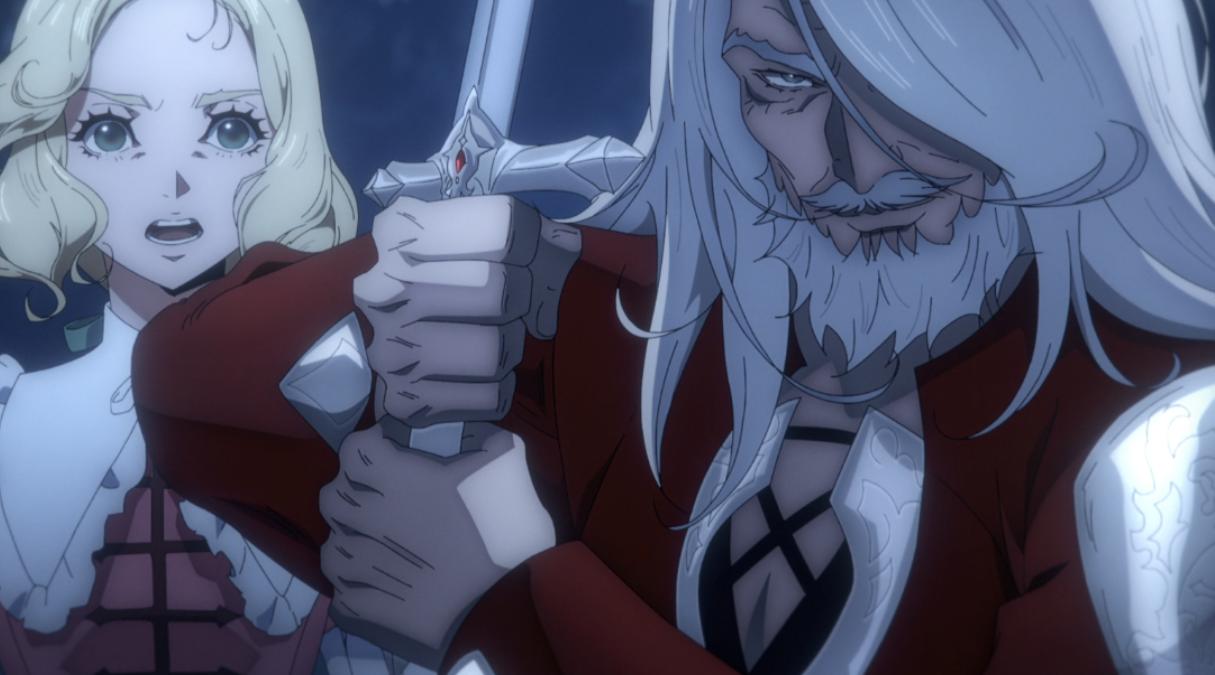
Having first made his appearance last season, helping Richter unlock his powers, but Juste remained powerless. In the Konami games, Juste is the main protagonist in Castlevania: Harmony of Dissonance. He is part of the grandson of Simon Belmont and is considered powerful even among his family for his prodigious magical talent derived from the Belnades Clan. In Season 1, he’s a cantankerous old man offering small pearls of wisdom before Richter leaves to fight.
In the Powerhouse Animation canon, Juste is a vampire hunter and powerful magician in his youth who married Lydie and had Julia, Richter’s mother. When his wife Lydie and friend Maxim were murdered, he lost the will to fight and lost his magic, the same way that Richter did when he watched his mom die. To add to the survivor’s guilt and grief, Juste refused to leave with his daughter to hunt vampires in the New World. But when Olrox killed Julia, Juste watched over Richter from a distance, sending money to Tera to help support him but keeping away.
In Season 2, Juste finds himself in a larger role. As Richter heads to Paris, Juste dons his signature red coat from the game and takes up the mantle as Maria’s guardian. He cares for her like his own and tries to push her to choose life and see that there is something to live for, even if she is alone. Juste’s pain is palpable throughout Castlevania: Nocturne Season 2 and in how he relates to Maria.
When Maria awakens the darker side of her powers, she conjures a dragon she can’t control. As the dragon rears its head to unleash fire on Maria, he jumps into the fray, shielding her with his body and much like Richter his powers come back. Having distanced himself from others and allowed his own pity and despair to root, his self-sacrifice in this moment activated the light inside him, and for the rest of the season, Juste delivers top-tier Speaker magic action sequences.
Drolta Tzuentes
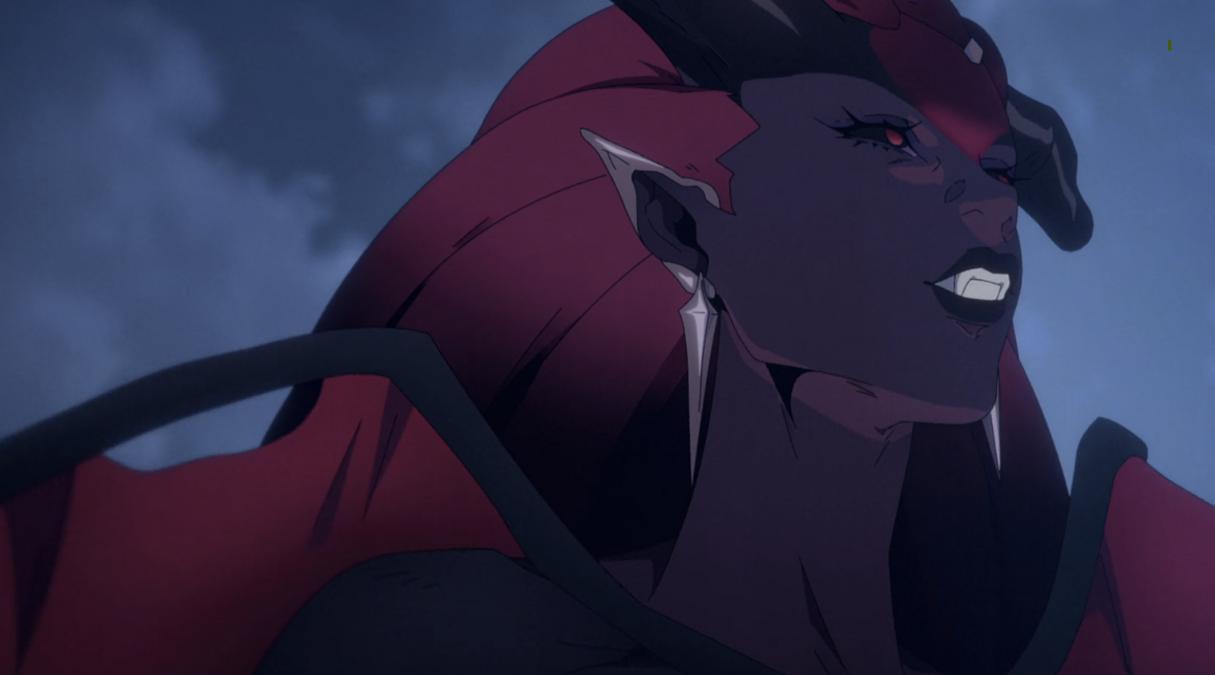
Drolta is the Vampire Messiah’s righthand woman and her biggest follower. A skilled fighter, Drolta led her human life as a priestess of Sekhmet, the Egyptian god of war and vengeance. Based on Drolta Tzuentes in Castlevania Bloodlines, the Drolta we see in Castlevania Nocturne is easily one of the most visually beautiful characters in the entire series.
She is one of the only characters whose costume and hairstyle change in nearly all of her scenes. As gorgeous as she is, she’s moved from crone in Bloodlines to beautiful disciple. With the ability to grow wings and fly through the sky, her hand-to-hand combat is unmatched, and her demonic look is one of the best designs we’ve seen for an enemy in the franchise so far. Unyielding in her devotion to Erzsabet Bathory, she’s bringing together followers from the vampire aristocracy in France and standing guard against anyone who would attempt to cause conflict with her Goddess.
At the end of Season 1, Alucard kills Drolta. As Erzsebet grieves her partner, her disciple, Abott Emmanuel, has discovered that nightcreatures retain their soul. But since Drolta is already a vampire, does she have one? Turns out, the answer is yes. Resurrected as a beautiful and glorious thing, she can feel the sun on her skin again, her power is unmatched, and as we learn more about her connection with Sakhmet, it only grows.
Drolta receives character development by way of flashbacks to her time as a priestess of Sekhmet, and it informs the audience about how she has come to view suffering. For Drolta, every suffering is a fleeting moment, leaving wisdom learned behind. She has been wounded and killed and seen her god ripped from her temple. In Erzsebeth, she sees Sekhmet’s renewal and the completion of her life’s goal.
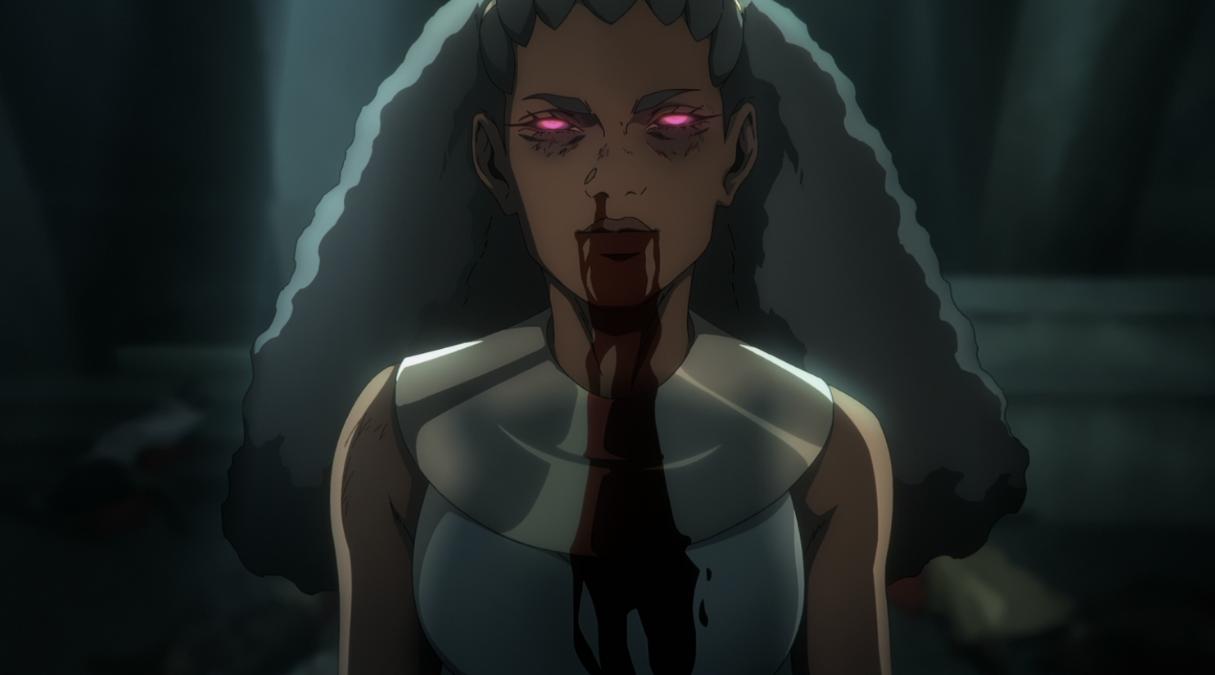
She is Erzsebeth’s disciple, but more importantly, the devotion and love she directs toward the Vampire Messiah are rooted in something much more ancient than a simple romance. Having watched her sisters in worship killed by men, Drolta makes the decision to fight back when one is left. A vampire, she kills him, and ends her pain by consuming his blood. She becomes a vampire that day and, from that point on, looks to bring Sekhmet onto the mortal plane. That is why she served Erzsebet.
Castlevania: Nocturne Season 2 recontextualized who Erzsebeth is for its eight episodes. We see her love, grieve, murder, and beg for worship. She is a big bad with the power to wipe out the sun, and yet, she is also beholden to the power of Sekhmet that she attempts to find and wield. As with the original series, villainy in Castlevania remains complicated in the best possible ways.
When it’s clear that Erzsebet is not meant to be Sekhmet after Annette nearly kills her, Drolta takes matters into her own hands. She realizes that she can be Sekhmet. She can be the goddess and not the disciple. She drains Erzebet’s blood, drops her body, and becomes the goddess she was meant to be, putting up an even larger fight than Team Belmont expected.
Erzsabet Bathory
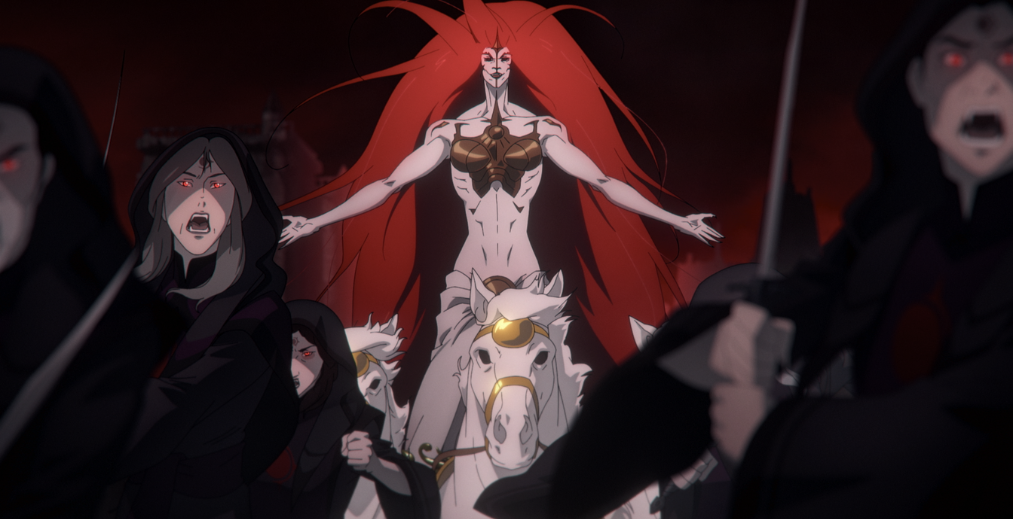
The Vampire Messiah, the Vampire Queen, Erzsabet Bathory (or Elizabeth Bartley in Symphony of the Night), comes from Eastern Europe, where she terrorized legions of young girls. Inspired by the vampire countess of history, she also steals young women from their homes and transforms them into new life. But Erzsabet’s promise to “eat the sun” as the Vampire Messiah isn’t grounded in her power as a vampire, but rather from her powers as the Lioness, Sekhmet.
Drolta’s servitude comes not only from believing in the Messiah’s promise to bring a new world where vampires don’t bow to humans, but it also comes from the fact that Erzsabet drank the blood of Sekhmet. A goddess and not a vampire, her power is frightening. For most of the season, she stands as a shadow across our characters, the impending doom. Then she appears in all of her regal glory, eating the sun and transforming into the Lioness of myth. Unscathed by even Richter’s strongest attacks, Erzsabet Bathory stands tall, even if her beloved Drolta is killed.
For Season 2, Erzsebet’s survival and domination rely on consuming the last part of Sekhmet’s soul. The God of War brought to life. This is why Drolta loves her. There is less intimidation over these eight episodes. She is still powerful, yes, but her need for people to worship her and her grief and pleading to see Drolta live again are sides we didn’t know about. One that shows her weakness.
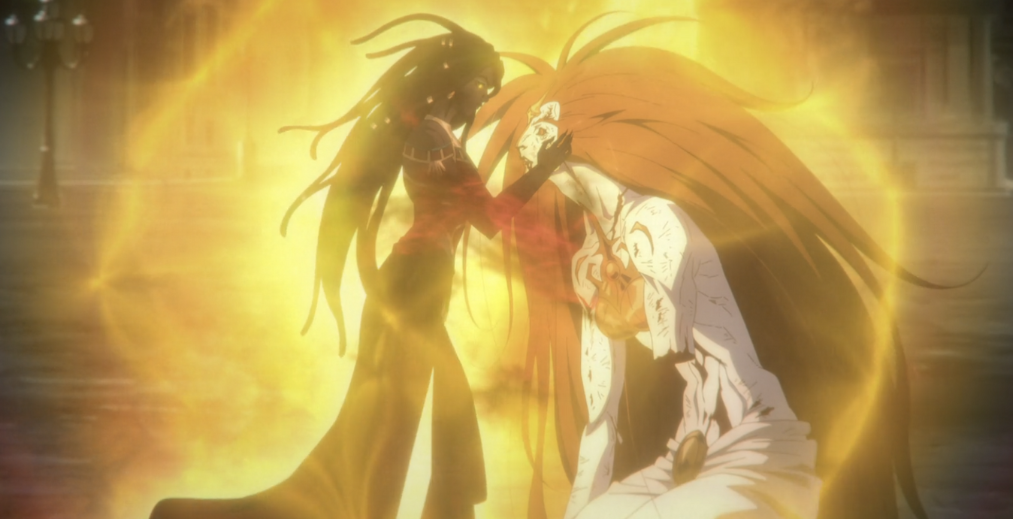
In the season’s final fight, Erzebet is Sekhmet come to life and fights against the rest of Team Belmont. Annette also allowed Sekhmet’s soul, even if it’s burned her from the inside out. The fight is dramatic and some of the best action, rivaling the fight with Death at the end of Castlevania Season 4. Team Belmont comes together, but they fight until they can’t stand, and then Sekhmet, as Annette tries to take Erzsebet home.
It’s at this point that Drolta swoops in to save the Vampire Messiah, missing an arm and bloodied, close to death. As Drolta picks up Erzsebet, their love splinters under Sekhmet’s weight. Erzsebet shows that her love for Drolta was because her disciple was devoted to her, worshipping her. But Erzsebet is also betrayed. Drolta kills Erzsebet, costumes her, and takes the power of Sekhmet for herself. And so ends the Vampire Messiah with a whimper.
Castlevania – Season 1 | Season 2 | Season 3 | Season 4
Castlevania: Nocturne – Season 1 | Season 2

